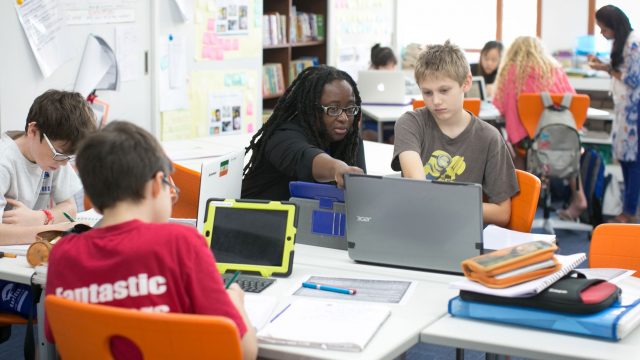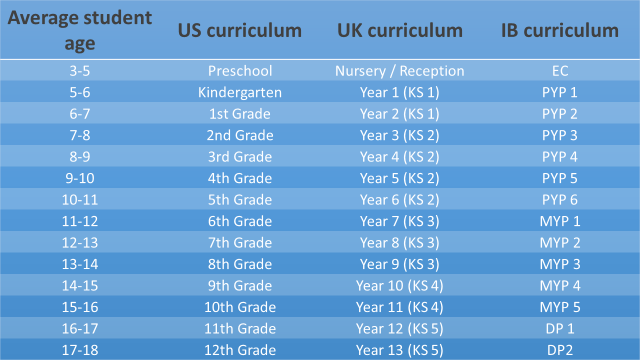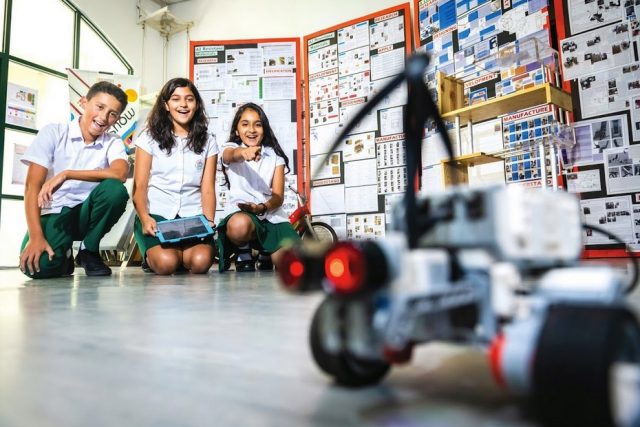Breaking down the differences between Teacher Horizons partner schools’ most common curricula: UK, US and the IB
Teacher Horizons partner schools differ significantly from one to the next: Student population, school culture, campus facilities, can range widely to meet the needs of their community. But for educators, one of the most important factors that can vary is the curriculum offered by the school.
International institutions offer a breadth of different academic systems for students — South African IEB, English National Curriculum, Indian CBSE, the US curriculum — and each has their own value for students. For teachers coming from a different national curriculum it can be intimidating to think about working in a school that uses an unfamiliar education system: What are AP courses? How are they different from A Levels? When do students start the Middle Years Programme?
With so much specific vocabulary, it can be confusing for those new to a curriculum to follow the conversation. A large majority of Teacher Horizons partner schools teach a US, UK or international academic system. While there are several curricula with an international focus, over 5,000 schools teach the International Baccalaureate (IB) programmes, many of which are Teacher Horizons partner schools.

We wanted to clear up any confusion between these three curricula and help those teachers thinking about making the jump to a new system. If you haven’t already, join Teacher Horizons now to access positions with international schools offering a range of academic systems.
The US curriculum: general education covering a range of subjects
From kindergarten to 12th grade, the US curriculum works to educate students in a broad range of topics without placing significant emphasis on specific assessment goals.
Elementary schools focus on English and maths skills while children develop socially and then take on more rigorous academics in the 4th grade. Primary education in US systems extends to the 5th or 6th grade depending on the school.
In middle (grades 6-8) and high (grades 9-12) school, students study a range of generally prescribed courses: English, maths, sciences, foreign languages, history, art, music and physical education. Assessments for these subjects are typically conducted internally and are used to determine whether students will be tracked into advanced levels.

With the exception of Advanced Placement (AP) courses, students studying US curricula do not take formal assessments comparable to the IGCSE, A Levels, or DP exams. AP courses allow students to study a subject of their choice in greater depth for one year and demonstrate their knowledge through a standardised exam. Some universities in the US accept passing grades on these exams in lieu of introductory courses.
The UK curriculum: focused and assessment-driven
All government schools in the UK use the English National Curriculum, more commonly known as the British system. This uniformity allows schools — including international schools using this system — to compare their results and share resources. This similarity rings true for IB schools as well, which promotes collaboration between colleagues from across the globe.
In the UK system, students progress from Key Stage 1 to 2, allowing schools to measure students’ progress throughout this phase of their education. At this stage, the US, UK and IB systems look the most similar to the untrained eye. Though Primary Years Programme (PYP) and Key Stage 1 and 2 teachers would argue there are important differences in the educational systems for students of the same age.
In Key Stage 4 (Years 10-11) students prepare for their General Certificate of Secondary Education (GCSE) exams, or IGCSE exams in international schools. Students must take a total of eight exams from a selection of preferred subjects including maths and English through a variety of examination boards chosen by the school.

Students then choose to specialise in 3-4 subjects for their Advanced Levels (A Levels), which requires students to complete exams at the end of both Year 12 and 13 to receive qualification to enter universities. Schools commonly refer to this phase of students’ education as 6th form or Key Stage 5. The requirements for each subject vary but these demanding courses expect students to spend considerable time developing relevant skills and knowledge.
The emphasis on assessment in the British curriculum encourages students to specialize in a few subjects, studying each area in greater depth than other systems of education.
The IB curriculum: international emphasis with diverse components
With similarities to both the US and UK education systems, the IB curriculum is unique in that it impacts more aspects of school life on campus. A number of required components, which vary by programme, play significant roles in shaping a school community. The Primary Years Programme Exhibition and Creativity, Activity and Service (CAS) offer students opportunities to pursue their interests beyond the academic components of the curriculum.
Another central focus of the IB curriculum is the learner profile. This framework of learner development provides a lens for international schools to deliver the IB programmes.
The learner profile, “describes a broad range of human capacities and responsibilities that go beyond academic success.”
The PYP programme develops learners who are independent and courageous. Skills emphasised in this programme include collaboration, confidence and taking different perspectives into consideration.
Teaching the Middle Years Programme (MYP) can pose challenges to teachers new to the assessment system of criteria. But this curriculum provides opportunities for unique teaching approaches and project-based learning throughout the five years of the programme.
If you want to break into IB teaching, read our advice on how to get IB experience.
The Diploma Programme, often likened to A Levels, stands out in several key ways. Diploma students select six courses to study, which fall into the following groups: studies in language and literature, language acquisition, individuals and societies, sciences, mathematics, and the arts. In addition to these academic pursuits students take an additional course called Theory of Knowledge, which, “asks students to reflect on the nature of knowledge, and on how we know what we claim to know.”
Other required components of the Diploma Programme include the Extended Essay and CAS, which creates a demanding yet rewarding academic system for students who receive the right support.

What’s the best academic system to teach?
Each curriculum has its advantages and disadvantages, and individual schools using each academic system contribute to the pros and cons of each. Some teachers prefer one system over the other because it enables them to examine their content more creatively. Some prefer teaching the same system they grew up learning because they don’t have to adapt to new assessment styles.
Diversifying your experience teaching other curricula can enhance your resume, demonstrating your adaptability as an educator. Teacher Horizons’ international advisers can provide further advice on how to market your current set of teaching skills for another academic system.
Join today and connect with your own adviser today to broaden your teaching repertoire and grow as an international educator.



